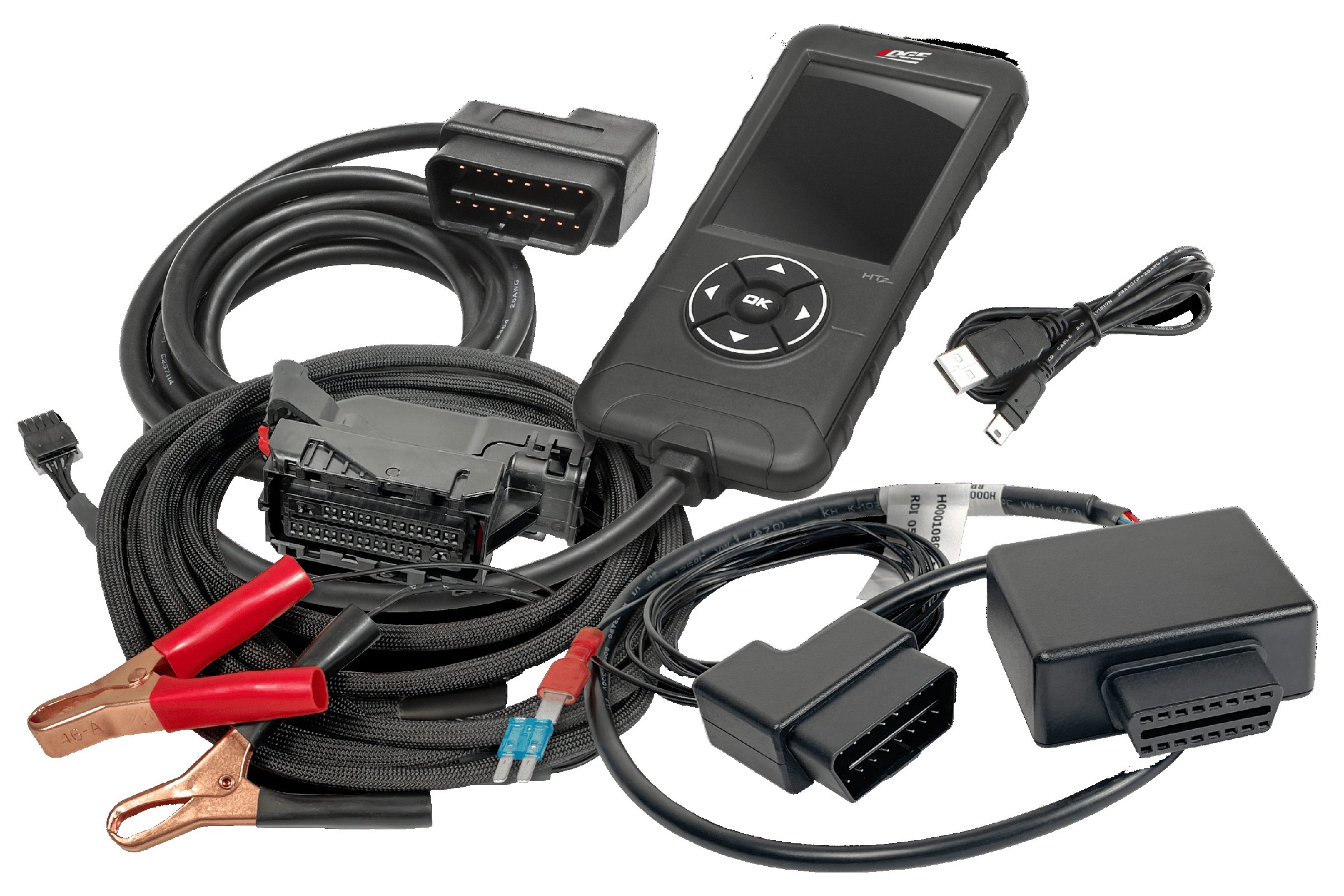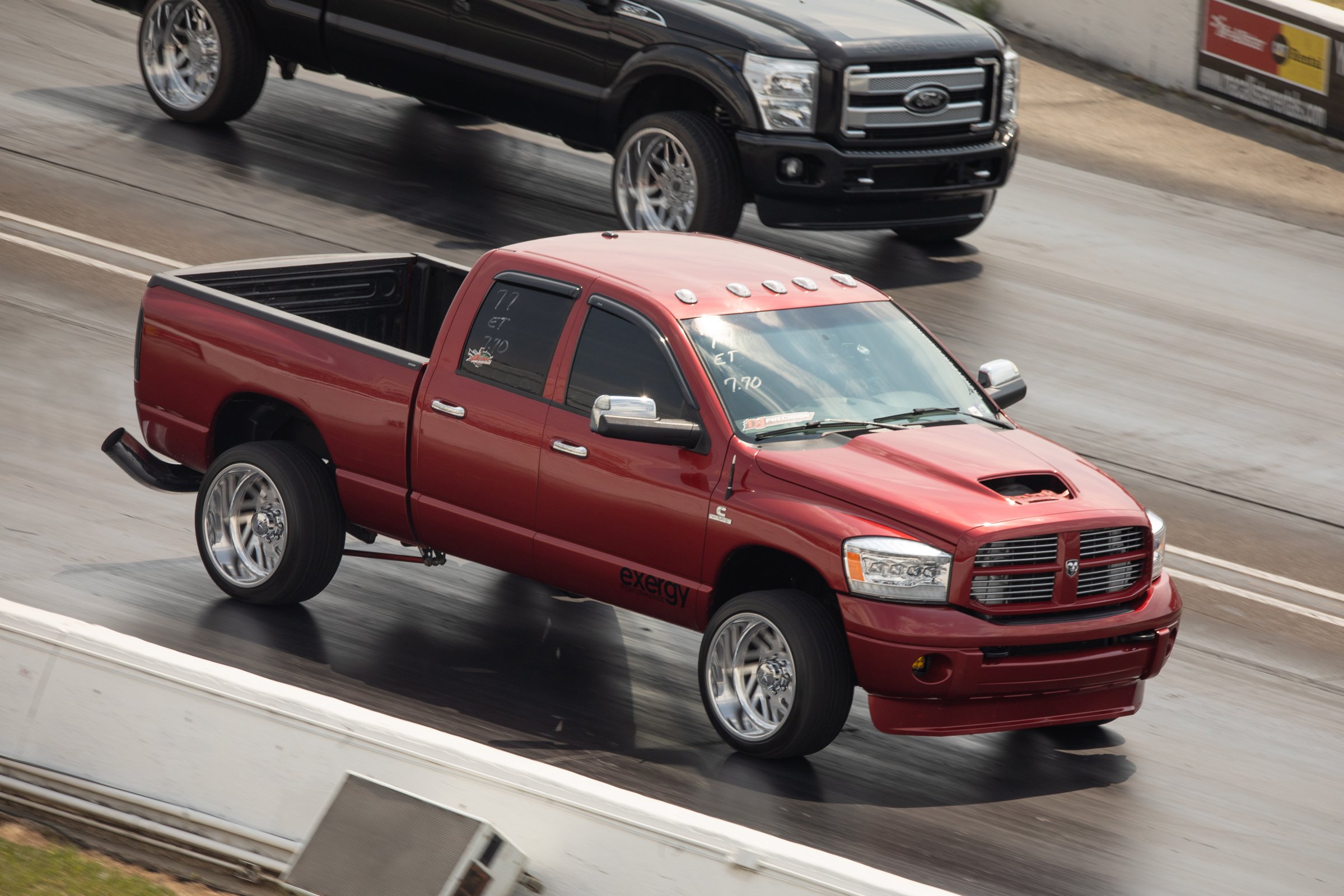If there is one thing all diesel truck owners have in common, it’s that we want more power. Let’s face it, we haul stuff, break stuff, and then fix stuff, all in the quest for more power. So, when the guys at Calibrated Power put together a little test to see what 5.9 Cummins turbo worked the best on their test mule, I thought you guys might like to see the results.
Calibrated recently dove deep into turbo testing and analysis on a 5.9-liter Cummins. Using their Mustang chassis dyno, EFiLive Tuning, and 20-plus years of experience, Nick Priegnitz and the R&D Team compared a stock turbo, a Stock with wastegate mods, a Stealth STR, Stealth 64 (Mach 1), and Stealth 67 (Mach 2) turbos on a 2007 5.9-liter Ram 2500 HD to show exactly where in the powerband each one shines.
If you’re into data, the guys put the numbers for air-fuel ratio, drive pressure, shaft speed, EGTs, boost, towing performance, spool-up, and of course, peak horsepower (with and without lambda/air-fuel limits). They are all broken down in an easy-to-follow and easy-to-understand format.
The Specs On The 5.9 Cummins Turbos
- OEM Stock HE351cw- Stock. This turbo is a great example of what can be expected from trucks running stock boost limits, either without boost tuning or wastegate mods.
- OEM Improved HE351cw – This turbo is a stock core with a modified wastegate canister and rod adjustment to spec. This upgraded wastegate uses a stronger spring to keep the wastegate circuit at higher drive pressures and also allows peak boost to reach about 37psi.
- Calibrated Power STR – This turbo uses an upgraded rotating assembly 60mm x ’67 Beastwheel’ as well as our upgraded wastegate canister matched to allow about 41psi boost pressure.
- Calibrated Power Stealth 64 – This turbo uses an upgraded rotating assembly 64mm x ’67 Beastwheel as well as our upgraded wastegate canister matched to allow about 46psi boost pressure.
- Calibrated Power Stealth 67 – This turbo uses an upgraded rotating assembly 67mm x ’67 Beastwheel as well as our upgraded wastegate canister matched to allow about 50psi boost pressure.
When the testing was complete, it was clear that the Stealth 67 performs its best at higher RPM. Further enforcing the importance of matching your turbo to your desired operating range. The EGT data collected showed how well each turbo manages temperatures, especially at different engine speeds. All of the Stealth turbos provided substantially improved EGTs compared to the stock and modified stock turbos.
Turbo-shaft speeds showcase the reliability of each turbo, and this study also shows that the Stealth line of turbos keeps a balance between power gains and turbo lifespan. Boost pressure indicates how efficiently air moves through the turbos, with larger Stealth variants providing noticeably better performance.
Drive dynamics, like drive pressure and drive: boost ratios, reveal insights into exhaust system flow and the reliability benefits of the Stealth series, especially in high-performance situations. This analysis is designed to help users make informed choices based on their driving conditions and performance needs. It’s always important to remember that increases in any aspect of performance come with a trade off and you always want to match your turbo to your desired operating range and driving needs.
You can get all the details by watching the video above, or if you really want to get granular, all of the test results can be found on the Calibrated Power Blog.





